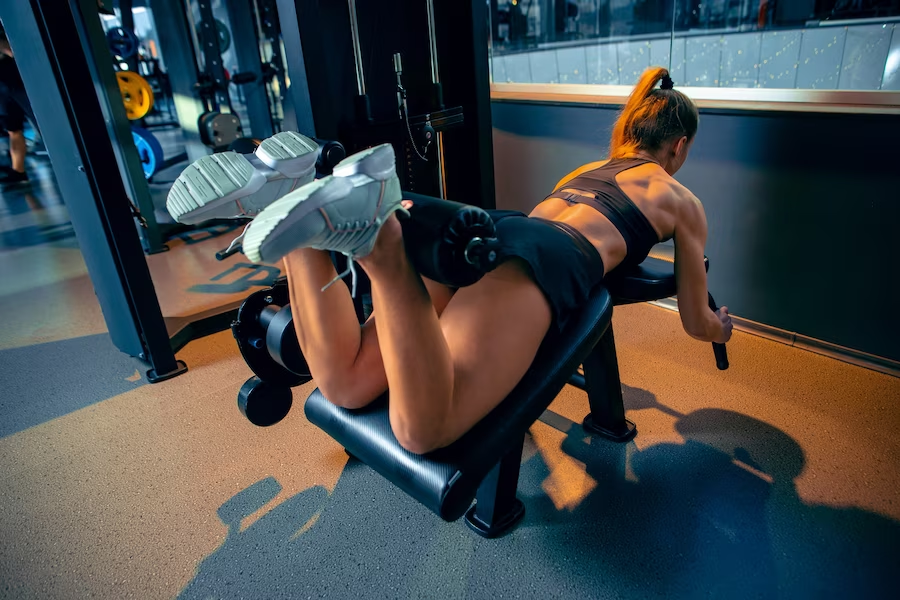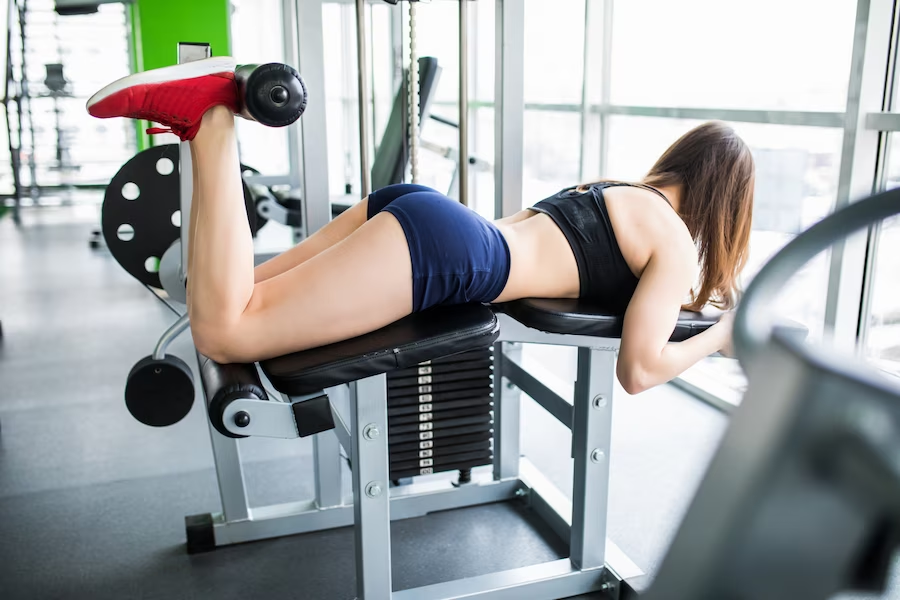If you’ve ever stepped into a gym, you’ll undoubtedly notice people working diligently on various machines and equipment to tone and strengthen their bodies. Among these, the glute machine stands out as a popular and highly effective tool for targeting one of the largest and most powerful muscle groups in the body – the glutes. In this comprehensive article, we’ll dive into the world of glute machines, exploring their numerous benefits, exercises that effectively engage the glutes, essential tips for proper usage, and address common FAQs. Whether you’re a seasoned fitness enthusiast or a newcomer to the gym, read on to unlock the full potential of glute machines and sculpt your way to stronger glutes.
The Glute Machine: A Brief Overview
Glute machines are purpose-built gym equipment designed to isolate and target the gluteal muscles, which include the gluteus maximus, gluteus medius, and gluteus minimus. These machines come in various forms, but the most common one resembles a padded bench with handles or levers that enable users to perform focused glute exercises.
Benefits of Using Glute Machines
Incorporating glute machines into your fitness routine can lead to enhanced performance, better aesthetics, and support for lower back and joints. Here’s an in-depth exploration of these advantages:
Targeted Muscle Engagement
Glute machines provide a way to hone in on the specific muscles you want to work on. Here’s how:
- Isolated Engagement: Focusing solely on the glute muscles leads to more effective strengthening and toning;
- Customized Workouts: Glute machines allow for adjustments, meaning that workouts can be tailored to individual needs and goals;
- Efficiency: Since they target muscles so precisely, workouts can often be more time-efficient.
| Feature | Benefit |
|---|---|
| Isolation | Direct focus on glutes without engaging unnecessary muscles |
| Adjustability | Tailor exercises to individual strength and flexibility levels |
| Efficiency | Reach muscle-building goals in less time |
Lower Back Support
A common issue during glute exercises is lower back discomfort, which can be minimized with glute machines.
- Designed Ergonomics: Many machines provide back support, reducing the risk of strain or injury;
- Alignment Aid: Promotes proper posture, which is essential for the health of the spine;
- Comfort: Enhanced cushioning makes workouts more comfortable and sustainable.
Joint-Friendly
People with joint issues will find glute machines particularly beneficial.
- Reduced Tension: Minimizes stress on the joints, making exercises more accessible;
- Rehabilitation Aid: Can be part of a therapeutic regimen for recovering from joint injuries;
- Injury Prevention: By controlling the movement pattern, the risk of further injury is reduced.
Increased Strength and Power
Strength in the gluteal muscles is vital for overall fitness.
- Sports Performance: Strong glutes improve stability and power in various sports;
- Functional Strength: Daily activities become easier with improved glute strength;
- Long-Term Health: Regularly using glute machines contributes to overall muscular balance and health.
Aesthetic Benefits
Finally, the aesthetic perks of strong glutes extend beyond appearance.
- Improved Appearance: Toned glutes enhance the overall look of the lower body;
- Posture Correction: Strong glutes help you stand taller, contributing to a more confident appearance;
- Spinal Health: Building strong glutes can aid in aligning the spine properly, contributing to long-term health.
Top Glute Machine Exercises
Let’s have a look at some of the best ways to maximize your gains on the glute machine:
1. Glute Bridge
The glute bridge is an excellent exercise for strengthening the posterior chain, which includes the glutes. The steps to this activity are as follows:
- Lay flat on your back on the glute machine’s platform;
- Stand with your feet about shoulder-width apart and your knees slightly bent;
- In order to get your hips off the ground, you’ll need to use your glutes and drive into your heels;
- At the height of the exercise, squeeze your glutes, and then slowly descend your hips.
Gluteus maximus activation, enhanced hip stability, and strengthened lower back are all benefits of the glute bridge.
2. Hip Abductor
The gluteus medius, a muscle vital to hip stability and growth, is targeted in the hip abductor exercise. Here’s the procedure:
- Get on the glute machine and cross your legs;
- Lean your feet up on the machine’s footrests;
- Against the resistance, extend your legs and feel the burn in your glutes;
- Return your legs to the beginning position gradually.
In order to improve your performance in a number of sports, it is recommended that you work on strengthening your hip abductors.
3. Hip Adductor
The inner thighs and glutes are worked on the hip adductor exercise, which is part of a complete lower body routine. The steps to take are as follows:
- Knees slightly apart, while using the glute machine;
- Lean your feet on the machine’s footrests;
- Using the resistance, draw your knees together to work your inner thighs and glutes;
- Bring your thighs back to the beginning position slowly and deliberately.
Leg strength is increased and injury risk is decreased when you focus on strengthening the hip adductors.
4. Glute Kickback
The glute kickback is an excellent way to target and work the gluteus maximus muscle. Do it right by following these instructions:
- Kneel on the glute machine and grasp the grips firmly;
- Extend one leg behind you and lift the bar using your glutes;
- At the peak of the movement, squeeze your glutes before lowering your leg.
To enhance athletic performance and general well-being, glute kickbacks are a great way to build strength in the glutes and hip flexors.
5. Leg Press
The quadriceps and hamstrings are the primary muscle groups worked during a leg press, but the glutes can also be efficiently engaged by using the correct foot positioning. The steps to take are as follows:
- Set the leg press machine’s seat so that your knees form a right angle (90 degrees);
- Spread your feet out to about shoulder-width on the platform;
- You can do this by extending your legs and hips and pressing the weight away while squeezing your glutes;
- Bend your knees and reduce the weight slowly, making sure not to lose your balance.
Although the thighs are the primary focus of the leg press, the glutes can be strengthened and developed through proper foot posture and engagement.
Tips for Proper Usage

Keep these things in mind to get the most out of your glute machine exercises and prevent injury:
- Warm-up: Get your muscles ready to go by prioritizing a dynamic warm-up that includes leg swings and glute activations;
- Focus on Form: Focus on your form and don’t rely on momentum to help you raise the weights. Instead, squeeze your glutes and move deliberately and slowly;
- Progressive Overload: Challenge your glutes and encourage muscular growth by gradually increasing the resistance or weight you employ on the machine;
- Balance Your Routine: While working your glutes on a machine might be helpful, it’s important to include other lower body and compound workouts into your regimen as well;
- Recovery: In order to facilitate muscle repair and growth, time should be allowed for rest between glute workouts.
Common Mistakes to Avoid
- Relying on Momentum: Lifting with momentum raises the risk of injury since attention is diverted away from the glute muscles;
- Neglecting Form: Ineffective training and even injuries are possible results of poor form. Keep your back straight and your glutes tight as you work out;
- Using Excessive Weight: Gradually add more weight to the bar, but never use so much that your form or safety is compromised;
- Skipping Warm-ups: Avoid muscular strain by always warming up before utilizing glute machines;
- Overtraining: Avoid overtraining by giving your glutes enough time to recuperate in between sessions.
Conclusion
All fitness levels can benefit from using glute machines because of how effectively they shape and develop the glutes. Include these moves in your regimen, focus on form, and increase the difficulty as you go if you want stronger, more defined glutes. If you want to see the best benefits from your glute training, you should combine it with other forms of exercise and a healthy diet. If you take care of your body, your glutes will reward you by becoming stronger and more attractive, and by helping you achieve a higher level of fitness.
FAQ
Using glute machines on a daily basis is not advised. To prevent overtraining and maximize muscle recovery, rest for at least one to two days between glute workouts.
Beginners can use glute machines, but they should start with a lower resistance and pay close attention to their form to prevent injury.
On the glute machine, you should perform three to four sets of 10 to 15 reps for each exercise. You should increase the weight so that the last few reps are a real challenge.
Although using a glute machine can help you build muscle and tone your buttocks, it may not have an effect on cellulite per se. Glute exercises, when added to a healthy diet and regular exercise program, can help you get smoother skin.
Because the glutes provide support for the lower back, using a glute machine can help with back discomfort in a roundabout way. However, if you suffer from chronic back pain, it is vital that you seek out the guidance of a medical expert.
